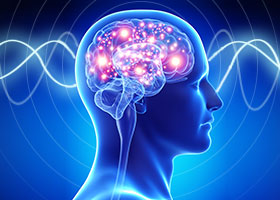Neural Bases of Cognitive Processing
A special issue of Brain Sciences (ISSN 2076-3425). This special issue belongs to the section "Behavioral Neuroscience".
Deadline for manuscript submissions: closed (7 June 2021) | Viewed by 29291

Special Issue Editor
Interests: neural basis of cognition; anticipation; perception; attention; decision-making; action; ERP; fMRI
Special Issues, Collections and Topics in MDPI journals
Special Issue Information
Dear Colleagues,
One of the main goals of cognitive neuroscience is to explain how brain functions lead to mental processes by which we are aware, think, feel, act, learn, remember, and anticipate future events.
The main purpose of this Special Issue is to gather studies on the neural bases of cognition, considered to be a set of biological operations and their interactions carried out by the brain to allow the best behavior in any situation. These studies will aim to achieve a more sophisticated level of understanding, showing new experimental techniques for studying functional interactions within the brain and new models for better understanding human behavior.
Both brain recording and stimulation studies are welcome. Proposals should investigate any basic components of cognition, such as awareness, perception, attention, reasoning, language, decision-making, action control, and executive functions, in both healthy people and in brain-damaged patients. Computational studies are also welcome.
As a common feature, the studies in this Issue will rely upon theories in cognitive science coupled with evidence from neurobiology and computational modeling to allow a better understanding of how the brain gives rise to mental experiences.
Prof. Dr. Francesco Di RussoGuest Editor
Manuscript Submission Information
Manuscripts should be submitted online at www.mdpi.com by registering and logging in to this website. Once you are registered, click here to go to the submission form. Manuscripts can be submitted until the deadline. All submissions that pass pre-check are peer-reviewed. Accepted papers will be published continuously in the journal (as soon as accepted) and will be listed together on the special issue website. Research articles, review articles as well as short communications are invited. For planned papers, a title and short abstract (about 100 words) can be sent to the Editorial Office for announcement on this website.
Submitted manuscripts should not have been published previously, nor be under consideration for publication elsewhere (except conference proceedings papers). All manuscripts are thoroughly refereed through a single-blind peer-review process. A guide for authors and other relevant information for submission of manuscripts is available on the Instructions for Authors page. Brain Sciences is an international peer-reviewed open access monthly journal published by MDPI.
Please visit the Instructions for Authors page before submitting a manuscript. The Article Processing Charge (APC) for publication in this open access journal is 2200 CHF (Swiss Francs). Submitted papers should be well formatted and use good English. Authors may use MDPI's English editing service prior to publication or during author revisions.
Keywords
- human cognition
- brain functions
- brain recording
- brain stimulation
- brain models






